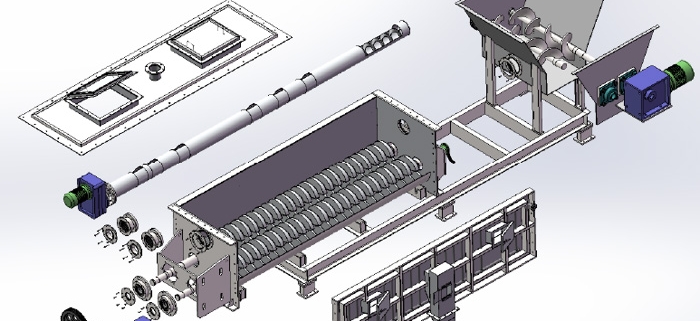Drying is a process of heat and mass transfer. Regarding the definition of “drying”, the important point is energy. Driven by energy, the material is dry and the heat source is critical to the overall drying process and is an important part of the drying equipment. The drying equipment uses a heat source, and the fuel used includes gas, liquid and solid.
Depending on the working principle of the drying equipment and the structure of the equipment, it is important to choose the appropriate drying method and fuel. For example, if the flue gas is burned by solid fuel (coal), the gas in the gas is more. Generally, the air can only be heated as an indirect heat source, and then dried by using hot air as a drying medium. This process is applied to flue gas and air heat exchange equipment, and of course also includes finned heat exchangers. The method of heat source in drying equipment is also common.
In the choice of heat source, the following principle is the larger energy consumption. There are many problems with the heat source of drying equipment used by many companies. The problem is mainly concentrated in the fact that the heat in the production cannot be matched to the drying equipment. The heat generated is low, the product moisture is high, the heat generated is high, the energy used in the entire drying equipment is too high, and the product cost increases. The drying equipment manufacturer needs to select a suitable heat source for the dryer; and for the drying method, the drying equipment manufacturer Several commonly used drying methods have also been described in detail below.
(1) Normal pressure drying
That is, the drying under atmospheric pressure is called atmospheric drying. The method is simple, and the box dryer (oven or oven) is used. The disadvantage is that the drying time is long, the heat-resistant component may be destroyed due to overheating, and the knot is easy to knot. Piece.
(2) Drying under reduced pressure
Drying under reduced pressure is a method of drying after evacuating in a closed container. The advantage of this method is that the temperature is low and the product quality is easy to smash. In addition, the adverse effects of air on the product are reduced, which has a certain significance for ensuring product quality. Particularly suitable for materials containing heat sensitive ingredients. Commonly used instruments are vacuum dryers. The drying effect depends on the degree of vacuum and the thickness of the object to be dried.
(3) Spray drying
Spray drying refers to a method in which a liquid material is dispersed into a fine droplet by a argonizer, and hot air is used to dry the fine droplets to obtain a dry product. This method can directly dry the solution, suspension and emulsion into granules or powder, eliminating the need for further evaporation and pulverization. The principle is that the dried liquid material is dispersed into a plurality of fine droplets through the purifier into the flowing hot air stream. Because of its large total surface area, the drying speed is extremely fast, and the water evaporation is completed in a few seconds. It has the characteristics of instant drying.
(4) Boiling drying
Also known as fluidized drying, it is a new development of fluidization technology in drug drying. It is mainly used for drying dry wet granular materials such as tablets, granules and the like. It has high drying efficiency, uniform drying and high output. It is suitable for continuous production of the same variety, and has the advantages of low temperature, convenient operation and small floor space. However, it is not easy to clean in the drying chamber, especially for the drying of colored particles, and the proportion of fine powder after drying is large. The principle of boiling and drying is to use the hot air flow blown from the bottom of the fluidized bed to make the particles float and suspend, and the fluidized roll is like “boiling”. The jumping of the material greatly increases the evaporation surface, and the hot air flow passes between the suspended particles. Heat exchange under dynamic conditions to remove moisture for drying purposes. If the vacuum is used for drying, the drying efficiency is higher.
(5) Freeze drying
It refers to a drying method in which the dried liquid is frozen into a national body, and the sublimation property is utilized at a low temperature and a low pressure to directly remove the ice into a gas to thereby achieve the purpose of drying.
Freeze drying requires a high degree of vacuum and low temperature, and the obtained product is porous, loose and easy to dissolve, and is particularly suitable for drying of some heat-resistant medicines and low-melting medicines. Such as enzymes, antibiotics, vaccines, etc., can also avoid the decomposition of easily oxidizable drugs.
With the development of science and technology in recent years, the types of heat sources for dryers are also increasing. New methods and technologies have been continuously improved, and heat pipe heat exchangers have emerged. In addition, the use of non-electrically heated radiators for heating and drying media is also constantly improving.



